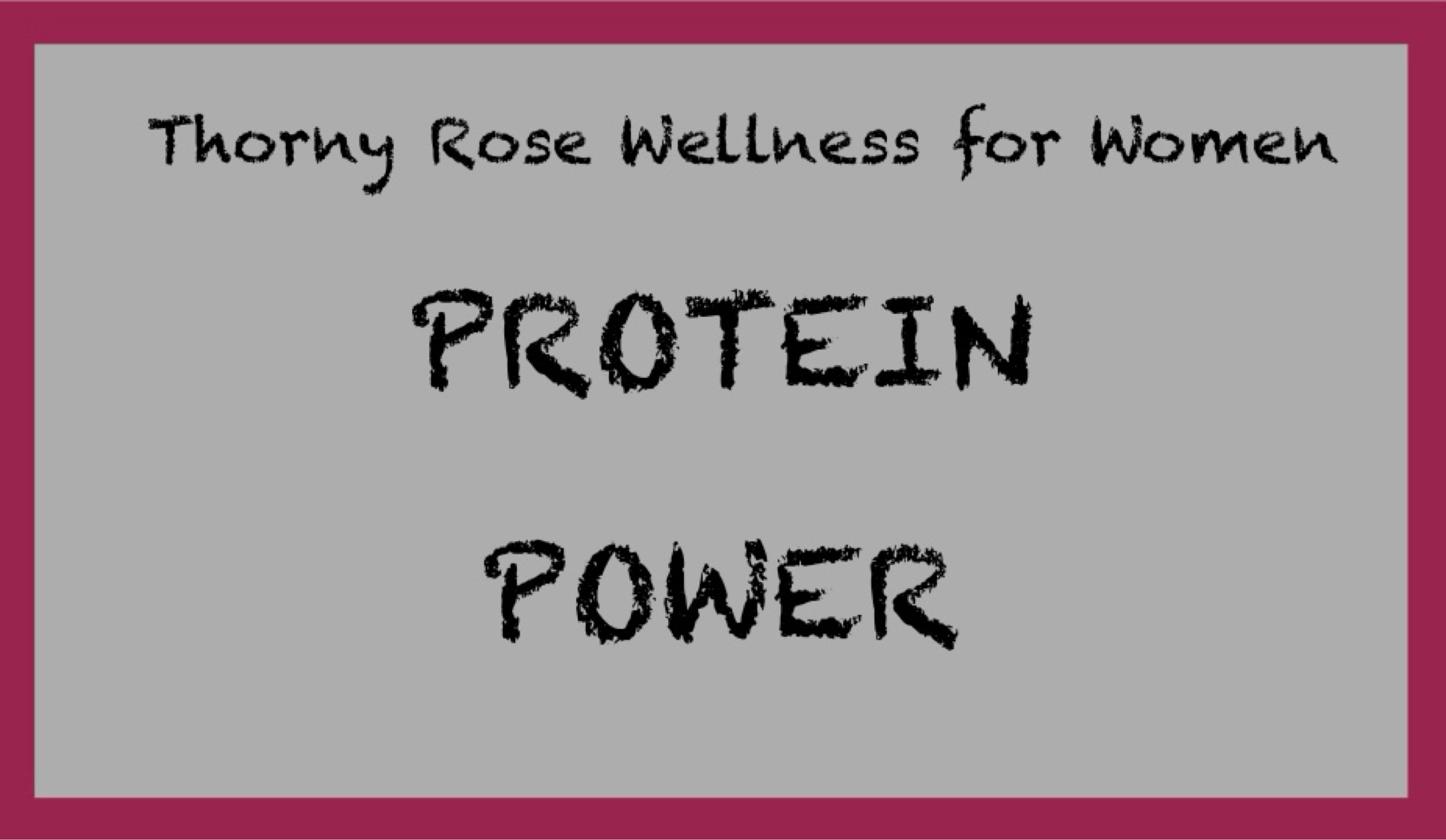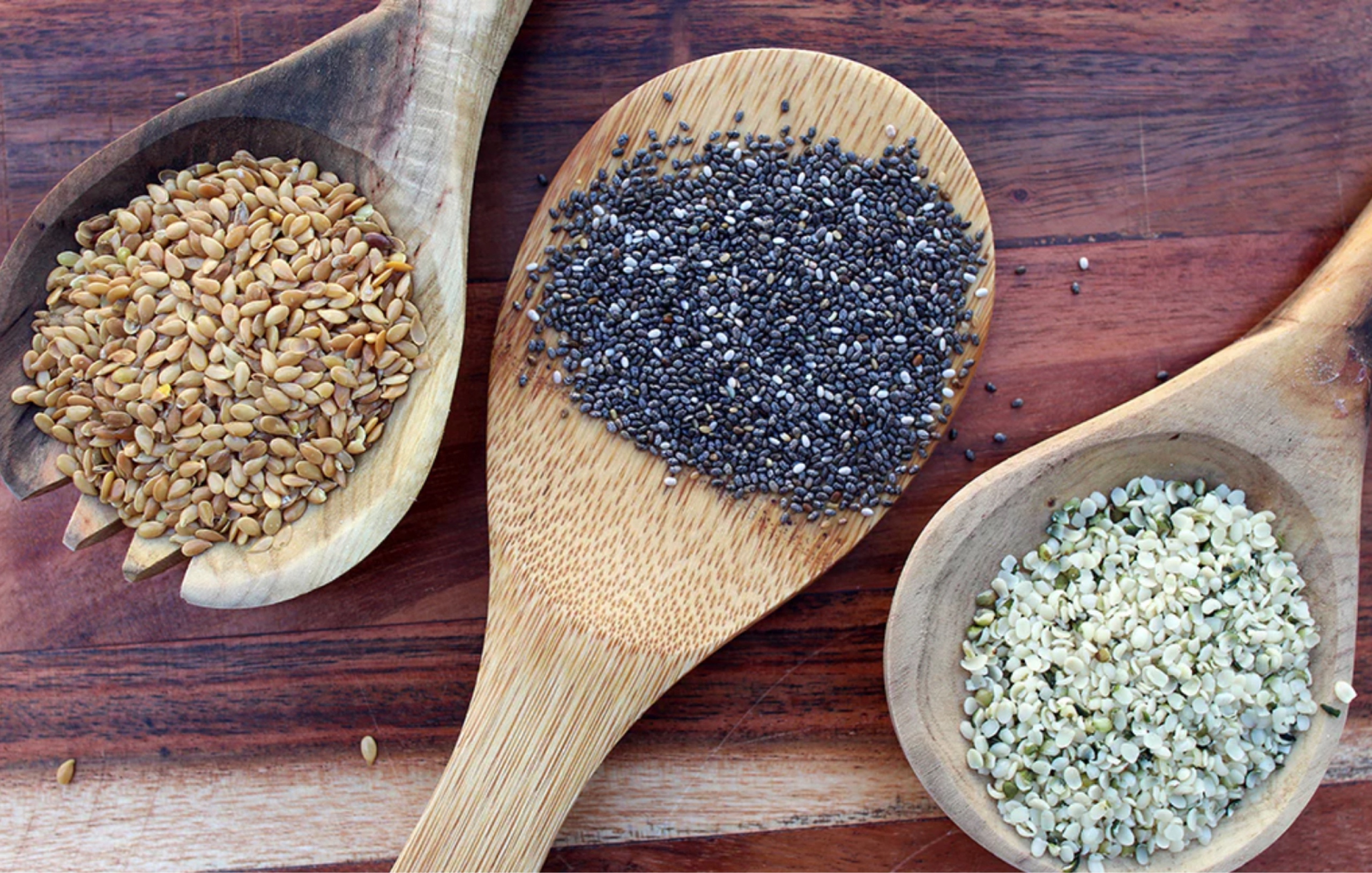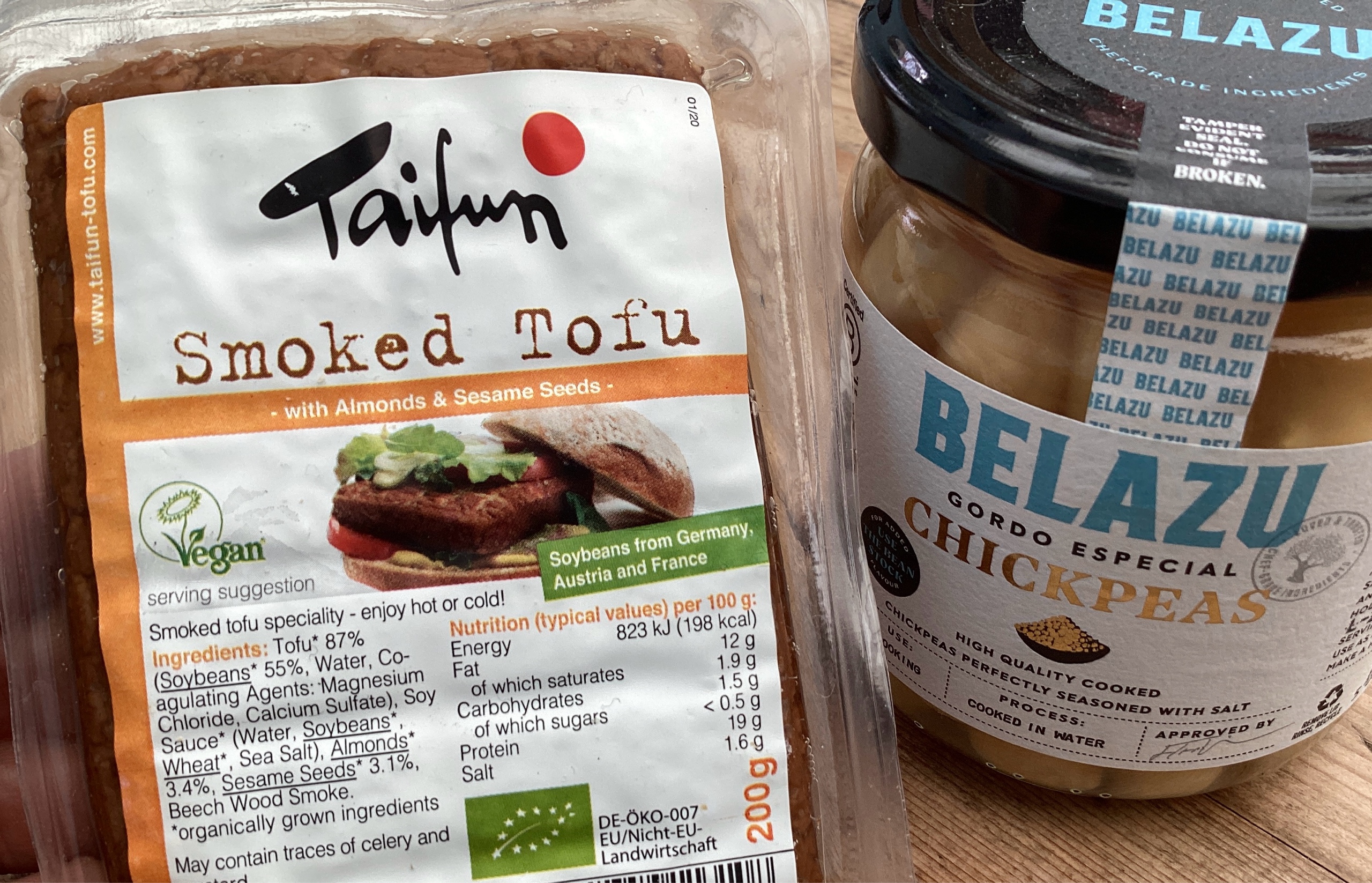Protein Power

I would say that any woman who is interested in improving their health would benefit from considering their protein intake. It is crucial for maintaining muscle mass, for tissue repair, for bone health, for metabolism and weight management, for hormone production, for blood sugar regulation, for satiety and appetite control, for supporting our immune function, for collagen production and also for cognitive function, as well as mood regulation (*see more detail below).
Opinion is very much divided on how much we need, and a lot of the research is not sex segregated and doesn’t take into account the stage of life that we are at, or what our activity level is. The suggested amounts vary from 0.8g of protein per 1kg of body weight, up to 2.4 g of protein per 1kg of body weight. That's quite a range!
Women - especially perimenopausal and menopausal women - can find it difficult to gain and maintain muscle mass, and muscle mass is so very important. As Dr Stacy Sims point out, lower muscle mass is associated with increases in metabolic syndrome and cardiovascular disease, and muscle mass is inversely related to death by any cause, meaning more muscle helps you live longer, and better. It also helps keep you independent as you age. So we need to do what we can to gain and maintain good lean muscle.
If we do take in more protein than we need for building and repair and all the other functions, the excess will be broken down and stored as fat - we don’t have a reservoir of spare protein kicking around.
However, for many women eating excess protein is not something we are going to accidentally do - we would have to work quite hard at it, just like we would have to work very hard to “bulk up”. Although some women are concerned about putting on too much muscle, the opposite concern - struggling to gain muscle mass at all - is far more likely to occur.
It isn’t just a question of the amount of protein, it’s also the quality. A “complete” protein contains all nine (used to be eight!) essential amino acids in sufficient quantities. One of the easiest ways to consume complete protein is by eating meat. This sort of makes sense - since we need protein to build muscle, it makes sense that muscle will be a good source of protein. However, it is perfectly possible to get enough protein from other animal sources (dairy and eggs) and from non-animal sources - legumes, nuts and seeds, principally. Full disclosure - since I’ve been a vegetarian for more than 43 years, I don’t have much to say on meat eating! And perhaps unsurprisingly, when I had my gut microbiome tested, meat comes up as a gut suppressor rather than a booster for me. It could well be quite different for you.
There are some plant sources of complete protein. Soy is one - so tofu, or tempeh, the fermented version - are easy sources. They are also phytoestrogens, so unless you are avoiding oestrogen due to having an oestrogen receptive cancer, this can be a good way to boost your oestrogen, which as we have seen (Hormones, and To HRT or not to HRT….), has many benefits.
Buckwheat (which isn’t related to wheat), amaranth, chia seeds and hemp seeds are also forms of complete protein.

Sesame, chia and hemp seeds, all complete proteins.
If a protein source is incomplete - that is to say, it doesn’t have all the essential amino acids in sufficient amounts - then combining it with a complementary protein works well. So whole wheat bread (not white bread) and baked beans will provide a complete protein. If cheese is something you eat, adding that will increase the protein content, too.
Hemp seeds - a complete protein - are often ground up to be used as a protein powder. This does count as a processed food, but the processing is relatively minimal. It is something you could do at home with a good grinder, which is often considered the acid test of whether or not food is “too processed”. It is the case that grinding something up changes the “matrix” of the food, making it more easily digested, which is not always what we are going for. A smoothie for instance provides a more instant hit of energy than the whole fruit. So it’s an excellent choice if you are about to use that energy in a tennis match, less so if you are sitting at a desk. But in fact adding hemp protein to a smoothie will slow down the rate at which the sugars in the fruit are released, making it less likely to spike your blood sugar.
I don’t know about you, but for many years most of my meals were carb based. A big bowl of steaming pasta, with tomato sauce and cheese. Pizza. Rice with some sort of vegetable chilli would have been the most veg-heavy option I would have gone for. The lack of vegetables was testament to the fact that vegetarianism doesn’t have to be healthy!
Over the years, my focus has shifted. It’s not that I don’t ever have pasta, but it’s much more likely to be a big bowl of roasted vegetables, with some pasta and sauce in there. My first thoughts nowadays are for the plant diversity (30 different plants a week are advised for good gut microbiome health), and the protein source.
For me, this is often beans, or lentils. I jokingly call it “bean sludge”, and I have heard that other households refer to it as “hippy slop”. If the names don’t put you off, it is an excellent way of eating. Economical, great for your gut microbiome, full of excellent fibre, protein, and the right sort of carbohydrates. Definitely not an ultra-processed food, and a great crop for the soil, as well. Legumes are nitrogen fixing, meaning they take nitrogen from the air and fix it into the soil, so such crops can be a great way to improve soil quality without resorting to chemical fertilisers.
The downside for many is their digestibility, or lack of it. They are well known for producing gas. The beaninstitute.com (yes, really) has this to say:
“Beans contain fibres called oligosaccharides (all-uh-go-SACK-are-rides), which are non-digestible, fermentable fibres that cause gas. While this might sound like a bad thing, it’s actually a very good thing. These fibres survive the acidic stomach and don’t get digested in the upper part of the gut. They make their way intact to the colon where they are fermented by beneficial bacteria. Gas is created during this fermentation process. It’s a good sign, one that says these healthful bacteria are being fed well, maintained, and enhanced through the right food choices, which in turn may lead to the prevention of diseases of the gut, as well as other organs in the body. Fibres from foods like beans that are able to reach the gut intact and stimulate growth and promote activity in the beneficial microflora are also referred to as prebiotics.”
They also go on to explain how people adapt to consuming beans, and how you can reduce the amount of potential discomfort from bloating and flatulence, principally by: increasing intake slowly, changing the soaking water several times, rinsing tinned beans well, and using herbs such as asafetida whilst cooking, and possibly taking an enzyme tablet.
I would add that there are beans and then there are beans. There are mass produced commodity beans that are cooked in such a way as to minimise the production cost, and then there are heritage varieties, cooked with taste and digestion in mind, and these are an altogether different prospect. They do, of course, cost considerably more, but they are a bit of a game changer. You maybe don’t need them in stews, but in salads they are phenomenal. Check out the Bold Bean Company and Belazu for two excellent examples of delicious beans.
If you would like to eat more beans, but find them uncomfortable to digest, it may well be worth persisting. If you do have your gut microbiome tested, you can also find out if beans are likely to be a gut booster for you.
Another way around it is to sprout your beans, which is easily done at home and this makes the nutrients massively more available.
Nuts are another source of protein that many people find not very easy to digest. You can “activate” nuts, which basically means soaking and then gently dehydrating them, but the evidence for this making them more digestible isn’t there. It is undoubtedly the case that grinding nuts, or turning them into butters, makes them considerably more digestible.
Dairy sources of protein also usually come with a rich source of fat. This is often where lots of the beneficial nutrients are stored, and so going for low fat options isn’t always the best idea. But different sources of dairy have different nutrient profiles naturally. For instance, cottage cheese has about 1.5 times the protein of cheddar cheese, much less saturated fat, and five times as much potassium.
Eggs, if you like them and don’t have any ethical objections, are a good source of complete proteins.
It’s probably not a good idea to get obsessive about any of this, but it’s a good idea to prioritise protein whenever you can. Again, unless you are quite unusual, you are unlikely to accidentally take in too few carbohydrates, or fat. As a snack, a handful of nuts (if you can eat them) is a great snack, much better than, say, a slice of toast, since nuts contain good amounts of protein, and also healthy fats, vitamins, minerals, antioxidants, carbohydrates and fibre. If you get the right mixture they can also be a complete protein. Or, if you are fond of toast and maybe need more carbs, a nut butter on toast is better than jam!

Protein tends to be quite expensive, especially compared to ultra-processed carbs such as doughnuts! But these are two particularly delicious forms.The tofu is a complete protein. These chick peas are likely to be easier to digest than cheaper alternatives, too.
The best way to get more protein into your diet is to identify the protein source in each meal, and go for more protein-based snacks, as above. If you don’t eat meat, it’s a little less obvious, because most non-meat protein sources are also sources of carbohydrates and/or fats. Nuts, as we’ve mentioned, have protein as well as carbohydrate, fibre (which is non digestible carbohydrate) and fat. Beans don’t have much fat, but they do have more carbohydrates than they have protein, although they exact amounts vary between the different kinds, and the “sugars” (or simple carbohydrates that are very easily digested) are low. What this essentially means is that if you are using beans as a protein source, they want to be abundant in the dish, and you might not need a shed load of rice to go with them, because they already contain a good source of complex carbohydrate.
Below is a little more detail on the importance of protein, especially for perimenopausal and post menopausal women.
DO drop me a line if you have any questions.
Just try shifting the balance of your intake more towards protein and see what difference it makes. You might be pleasantly surprised!
*Protein is crucial for peri-menopausal and post menopausal women for several reasons, as it plays a vital role in supporting overall health and addressing specific challenges that may arise during the menopausal transition. Here are some reasons why protein is important for menopausal women:
1. Maintaining Muscle Mass:
- Aging and hormonal changes, particularly the decline in oestrogen during menopause, can contribute to a loss of muscle mass. Protein is essential for maintaining and building muscle, and a sufficient protein intake can help counteract age-related muscle loss.
2. Bone Health:
- Protein is a key component of bone tissue. Adequate protein intake is important for supporting bone health, which is especially relevant during menopause when the risk of osteoporosis and bone fractures may increase.
3. Metabolism and Weight Management:
- Protein has a higher thermic effect compared to carbohydrates and fats, meaning it requires more energy for digestion and absorption. This can contribute to a slight increase in calorie expenditure and may support weight management during a time when hormonal changes can influence body composition.
4. Hormone Production:
- Proteins are involved in the synthesis of hormones, enzymes, and other essential molecules. Ensuring an adequate protein intake supports various physiological processes, including the production and regulation of hormones.
5. Blood Sugar Regulation:
- Protein, when consumed alongside carbohydrates, can help regulate blood sugar levels. This is particularly important as hormonal changes during menopause may impact insulin sensitivity.
6. Satiety and Appetite Control:
- Protein-rich foods tend to be more satiating, helping women feel fuller for longer. This can be beneficial for managing appetite.
7. Supporting Immune Function:
- Proteins are essential for the proper functioning of the immune system. A well-maintained immune system is crucial for overall health, especially during times when the body may be more vulnerable to health challenges.
8. Cognitive Function:
- Some research suggests that adequate protein intake may play a role in supporting cognitive function and may contribute to maintaining brain health during the aging process.
9. Collagen Production:
- Collagen, a protein, is essential for skin elasticity and joint health. Menopausal women may experience changes in skin and joint health, making collagen support through protein intake beneficial.